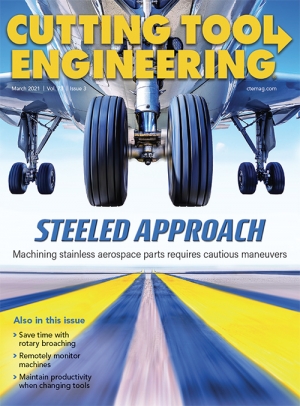In the current political climate of “shoot the media messenger first, and worry about facts later,” reporting the economic outlook of the manufacturing industry takes on renewed importance. Good or bad, up or down, expansion or contraction — CTE reports the numbers that serve as manufacturing’s economic indicators.
Generally, those numbers come from these reliable sources:
- The gross domestic product, which is compiled by the U.S. Department of Commerce Bureau of Economic Analysis.
- The Cutting Tool Market Report, which is produced by the U.S. Cutting Tool Institute and The Association for Manufacturing Technology.
- The Manufacturing Purchasing Managers’ Index, published by the not-for-profit Institute for Supply Management’s Manufacturing ISM Report on Business.
- The CTE Benefits and Salary Survey, which we conduct on a biennial basis by surveying our 60,000-plus print magazine subscribers.
In addition, CTE occasionally reports the results of one-time surveys conducted by various manufacturing-related entities, such as Fictiv, a San Francisco-based company that offers a digital manufacturing platform. The company surveyed 215 manufacturers last year and found that 97% had gained business opportunities as a result of increased demand for medical goods needed to fight COVID-19.
After I cited that last statistic in the Lead Angle of the December 2020 issue, a subscriber questioned me for using “a small survey” as a reflection of the wider manufacturing industry. While I do not agree that the Fictiv survey was small — 215 companies are a decent sample — I did at first think that the person had a point because the source of the survey is certainly not one of the commonly cited sources of manufacturing economic indicators.
I found, however, that I was way off point as I continued to read the subscriber’s critique.
“The magazines start talking negative about forecasts, and it is just another piece of ‘iffy’ facts that start negativity,” the person wrote in the email to me. “I think it’s wrong, but I know you won’t stop because it is an easy-to-get piece of information.”
Two things struck me immediately. First, I had used the Fictiv survey to cite a positive tidbit of information, not something negative. And second, somehow CTE was contributing to negativity by reporting the results of economic forecasts?
As the owner of CTE, I wanted to take this opportunity to clearly explain our role within and commitment to the manufacturing industry. I personally have a huge stake in the success of the industry because I have a huge stake in this magazine. As goes the industry, so goes CTE.
So believe me, reporting negative economic indicators isn’t something that we relish or even want to do; it’s something we have to do because it’s our job to keep our audience as fully informed as we are able. Most of the time, that means relaying practical information about new cutting tool and machine tool technologies. But it also means sharing the latest manufacturing industry statistics.
That said, this seems like a good time to mention that the latest PMI reading of 58.7 for January 2021 means that the overall industry has recorded eight consecutive months of expansion, according to the Manufacturing ISM Report on Business.
Also, manufacturing’s portion of GDP was more than $2.33 billion for the third quarter of 2020, only slightly below the $2.35 billion reported in the third quarter of 2019. And here’s a sign that bodes well for manufacturing’s fourth-quarter results: Overall GDP grew from $21.17 trillion in the third quarter of 2020 to $21.48 trillion in the fourth quarter, according to the Bureau of Economic Analysis.
The recovery continues. And, yeah, I much prefer sharing this news.
Related Glossary Terms
- lead angle
lead angle
Angle between the side-cutting edge and the projected side of the tool shank or holder, which leads the cutting tool into the workpiece.
- recovery
recovery
Reduction or removal of workhardening effects, without motion of large-angle grain boundaries.



 ARTICLES
ARTICLES



